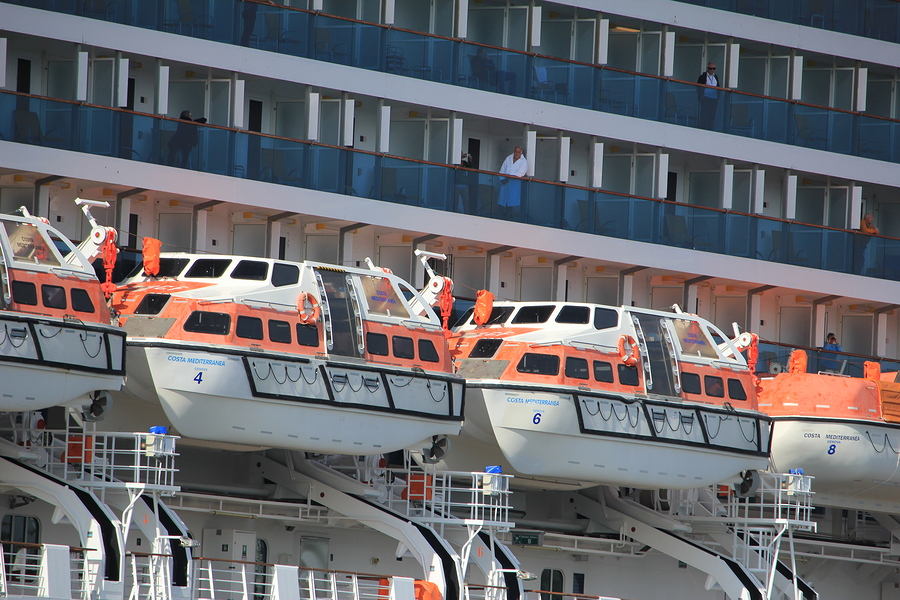Lifeboats are meant to save lives, not take them away.
There are an alarming number of incidents where lifeboat mishaps, often during compulsory drills, end in serious injury or death.
A modern vessel on an international voyage must have enough lifeboats to contain the same number of crew and passengers onboard. However, there is good reason to question the validity of lifeboats when they appear to cause more accidents than they are put into action during a real-life situation.
The International Safety at Life at Sea (SOLAS) regulations require that all ships’ crew carry out an abandon ship drill by lowering lifeboats into the water every week, and carry out an abandon ship drill where lifeboats are launched every month. A free fall lifeboat drill must be carried out every three months and 0nce every 6 months a free fall lifeboat drill must take place.
Following the tragedy of the Alexander L Kieland in 1980 when the lifeboats could not be released on load, the IMO required that ships built on or after July 1, 1986 should be fitted with a hook disengaging gear that can be operated off and on-load. However, lifeboat accidents began to occur following and a survey by the Oil Companies International Marine Forum exposed that a majority of lifeboat accidents were due to equipment failure relating to the hook release gear. This is due to the fact that no standard solution was required by the IMO for hook disengaging gear and so different manufacturers invented different load release hooks, some more complicated than others, resulting in a variety of different types and designs.
In October 2000, the launch of a lifeboat from the Pacmonarch bulk carrier went horribly wrong as the load release hooks came apart. Reportedly, the lifeboat fell 50 feet, killing four men inside the boat and injuring another.
2013 brought new requirements relating to improved on-load release hooks. Evidence suggests the new regulation has done little to improve the risk of lifeboat incidents. The requirements do not apply to older hooks fitted to boats used in rescue situations and in addition there have been reports where crew were unsure how to operate the lifeboat release system, indicating further training and education is needed to lessen the risk of lifeboat incidents.
More recently reports of lifeboat incidents onboard Royal Caribbean’s Harmony of the Seas and the Norwegian Breakaway have come to light. Each experienced falling lifeboats that led to a fatality on each and at least three or four injuries. The causes of these accidents have yet to be identified but Captain Harry Gale, Technical Manager at the Nautical Institute previously reported that failure of the quick release mechanism, incorrect following of procedures and lack of proper training are all major contributory factors to lifeboat related injuries.
Royal Caribbean experienced another lifeboat fall in 2016 from its Grandeur of the Seas, and although no investigation report has been published, evidence from passengers indicated frayed ropes and cables, a likely cause of the fall.
And just last week, although there were no injuries as no crew were onboard, the Bahamas Maritime Authority released a safety alert due to a lifeboat falling from an Aframax tanker. It turns out the cause was partially attributed to crew manually lifting the brake lever without clearing the gripes when the lifeboat davits are designed for auto release of the gripes once the brakes are released.
Back in 2013, a lifeboat onboard the Thompson’s cruise ship, Thompson Majesty, fell as it was being lowered as a result of low grade wire corroding and hook failure, causing five crew fatalities and further injuries.
In 2012 20 crew suffered broken bones during a drill onboard the Finlandia cruise ship operated by Eckerö Line when a chute was used by crew descending from the ship into the lifeboat.
The sinking of the Costa Concordia in 2012 also raised some questions about the reliability of lifeboats when three lifeboats could not be launched due to the vessel’s serious heel.
As an alternative to lifeboats, life rafts can be used. Easier to launch due to their automatic inflatable nature, they can provide additional assistance. However, in the Costa Concordia incident, only 6 of the 70 life rafts were launched, and there have been other reported incidents of life rafts accidentally inflating and departing the ship alone, indicating they may not provide the best alternative to life boats.
Seafaring may be one of the most dangerous occupations in the world (it has an accident rate 20x that of other jobs according to Guy Platten, Chief Executive of the UK Chamber of Shipping), but it seems that there are a significant number of fatalities related to lifeboats and incorrect use of them.
The IMO’s Maritime Safety Committee has gathered last week and this to discuss the safety of shipping. It is evident that this meeting is a necessary one.
Fathom-News
editor@fathom-mi.com































